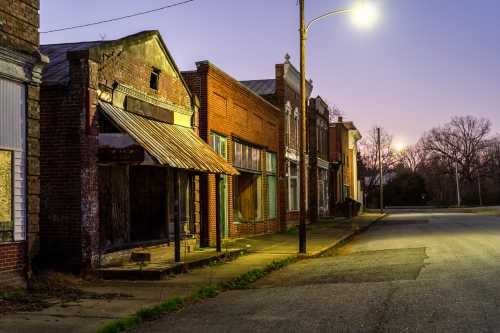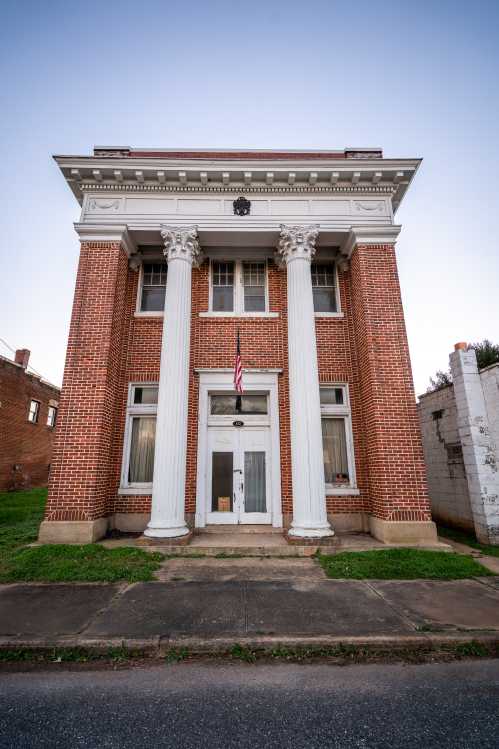Why do we always assume that "weird" has a negative connotation? I like to think that "weird" can just as easily be the most unique, unusual or absolutely entertaining thing we've seen in a long time. And without a doubt, the weirdest things almost always come from the greatest passions. Whether it's a penchant for sea treasures or an obsession (and I don't say that like it's a bad thing) for Elvis, it's always amazing to see what people make of their interests. The following 12 places all came to be because of people who were dedicated to an idea or activity. And frankly, I think the results are amazing!
1. The Giant Skate, Bealeton
I think this one pretty much speaks for itself. Marking the location of Hugo’s Skateway (now Rollerworks Family Skating Center), the 10-foot roller skate made of wood and plaster has been a favorite photo op for travelers along Highway 17 in Fauquier County since it was built in the 1980s. It has seen better days, but let’s be honest – a 10-foot roller skate just off the highway is always going to get your attention.
Foamhenge, Natural Bridge
If you’ve always wanted to see Stonehenge, but England just seems sooooo far away… you’re in luck. Virginia has her very own version of the famous stones– made entirely of Styrofoam. Thanks to the genius of local artist, Mark Kline, Foamhenge gives visitors an up close and personal look at the prehistoric monument with an exact replica fashioned from Styrofoam blocks. While it might not have the same mysterious backstory, there’s no doubt that Foamhenge takes the prize for fantastically weird – earning it countless spots on TV, in magazine articles and in books, including its very own place on the cover of "Strange But True Virginia."
3. Goat Walk at Westmoreland Berry Farm, Colonial Beach
"Skywalking" goats are not a sight you see every day. At the Westmoreland Berry Farm, goats roam across high wooden walkways crossing the farm’s driveway to a pulley feeder system that kids (and adults) can operate. Grab some ice cream, pick some fruit and enjoy the views at this one-of-a-kind Northern Neck farm in Westmoreland County. All in all, not a bad way to spend the day.
4. The Grave of “Stonewall” Jackson’s Arm, Ellwood Plantation, Wilderness
When General Thomas "Stonewall" Jackson was accidentally shot by his own troops during the Battle of Chancellorsville, his left arm was so severely damaged that it had to be amputated. A chaplain visiting the wounded general saw the amputated arm on a pile. Evidently, he thought Jackson’s arm to be far too superior to go in just ANY pile of body parts, so he took it to be buried at his brother’s estate, Ellwood. The arm was given a proper Christian burial and a headstone (although there are questions as to whether the arm is still in the same grave today). When Jackson died a week later, the rest of his parts were buried in Lexington.
5. Little Sorrel’s Skin, Lexington
You’ve seen where Stonewall Jackson’s arm is buried, but where, oh where, can you see the skin of his dead horse, you ask? Lexington, of course. Little Sorrel, originally named "Fancy" because it was a gift to Jackson’s wife that he took back (men, right?), was Jackson’s faithful steed throughout the Civil War. After Jackson died, the horse became a legend in his own right and lived out the rest of his 36 years at Virginia Military Institute, where Jackson had been a professor. Asking only for partial payment and some of the horse’s bones (there’s no accounting for taste), a taxidermist sewed the skin together and stuffed the hide to resemble a living Little Sorrel. The results were displayed at the VMI Museum. The bones, which ended up in a Pittsburgh museum, were reunited with their skin in 1997 when a concerned group from the Daughters of the Confederacy lobbied to have them moved back to VMI. The heroic bones were then burnt and buried on the school’s Parade Ground in front of Stonewall Jackson’s statue.
6. Miniature Graceland, Roanoke
Can’t make it to Graceland this summer? No worries. Don and Kim Epperly of Roanoke have you covered. Beginning in the 1980s, the couple decided to immortalize their love of Elvis with a miniature Graceland in their own front yard. Complete with replica buildings and a bronze statue of The King himself, the tribute still stands, but admittedly fell into disrepair after Don Epperly grew to sick to care for it. Thanks to the efforts of the Salem Garden Club and now Epperly’s son, Mike, the site has been cleaned up a bit and visitors can still catch a site of Graceland in all of its (miniature) glory.
7. The Markel Building, Richmond

It’s been called one of the 10 ugliest buildings in the world. But I’m not sure what architect Haig Jamgochian was expecting when he took his inspiration from a foil-wrapped baked potato (I can't make this stuff up). Built in 1962 for the Markel Corporation, this giant ode to aluminum foil stands as the only remaining piece of Jamgochian’s work after his "Moon House", a bullet proof house built for Howard Hughes with a crescent moon-shaped roof, was torn down.
8. Payne’s Sea Treasures, Chincoteague Island
As well known for its giant, 23-foot tall Viking statue as for it’s eclectic "junk", Payne’s Sea Treasures has been entertaining visitors and locals for decades. Although "Captain Mr. Bob" Payne, as he insisted on being called, passed away in 2006, the shop keeps his friendly and welcoming spirit alive with a crazy collection of shells, statues, anchors, fishing and boating paraphernalia from around the world and all other manners of odds and ends. The Viking, as he’s known, still stands guard over the road as he has for more than 30 years.
9. The Grand Kugel, Science Museum of Richmond
29 TONS of granite and yet, it can be moved with the slightest touch – that’s pretty impressive engineering. A kugel is a perfectly spherical ball that sits on a matching concave platform with only the thinnest layer of water between them. The water creates an effect that allows the ball to roll easily within the concave stand. The kugel at the Science Museum in Richmond – known as the Grand Kugel – is the largest of its kind anywhere in the world.
10. The Pest House Medical Museum, Lynchburg
Don’t like going to the doctor? A visit to The Pest House will change your perspective. The Pest – meaning "Pestilence" – House, now located in the Old City Cemetery, was Lynchburg’s first "hospital" – and by hospital, we mean quarantine facility for people with contagious diseases like smallpox and cholera. Built in the 1840s in Campbell County, it was a Hotel California-like situation where patients checked in, but usually never left – unless it was to be buried in the adjoining cemetery. During the Civil War, it was used as a Confederate hospital where 102 soldiers died of smallpox. It wasn’t until 1862 that Dr. John J. Terrell noticed the appalling conditions of the place and instituted significant reforms, reducing the death rate from 50% to 5%. Visitors can still see his surgical table, "poison chest", "asthma chair" and chloroform mask in the carefully preserved building. In addition to the Pest House, the cemetery also contains the Hearse House and Caretakers Museum, the Station House Museum, a chapel and the Mourning Museum. Not your run-of-the-mill-feel-good kind of place, it’s a fascinating walk through time all the same.
11. Mt. Trashmore, Virginia Beach
A beautiful 165-acre park with 2 mountains, 2 lakes, playgrounds, walking trails, a skate park and more. It sounds amazing, right? The only catch is that the entire park is built from a former landfill. It may sound crazy, but actually this park is a remarkable environmental feat accomplished by compacting layers of waste with clean soil to create highly functional and water-efficient public space. I suppose that’s what you could call turning trash into treasure.
12. Tombstone House, Petersburg
While most people might prefer brick or wood, this rather unusual house was built in 1934 from 2,200 tombstones of Union soldiers buried in the nearby Poplar Grove Cemetery. Stories vary, but it’s believed that Oswald Young bought the stones from the cemetery when officials pulled them out in favor of lower-maintenance markers. He is said to have turned the names and inscription inward and plastered over them. The more likely story is that the bases of the stones were cut off and these became Young’s building materials.
While I am sad to report that a few of the greats like Virginia’s Holy Land USA in Bedford, the Wax Museum and Toy Museum in Natural Bridge and Midgetville in Vienna, have closed, you can be certain that visiting any of these wonderfully weird attractions will leave an impression not soon forgotten. We would love to know about some of the craziest things you've seen in Virginia. Be sure to tell us about your favorites!
Subscribe to our newsletter
Get the latest updates and news
Thank you for subscribing!




























